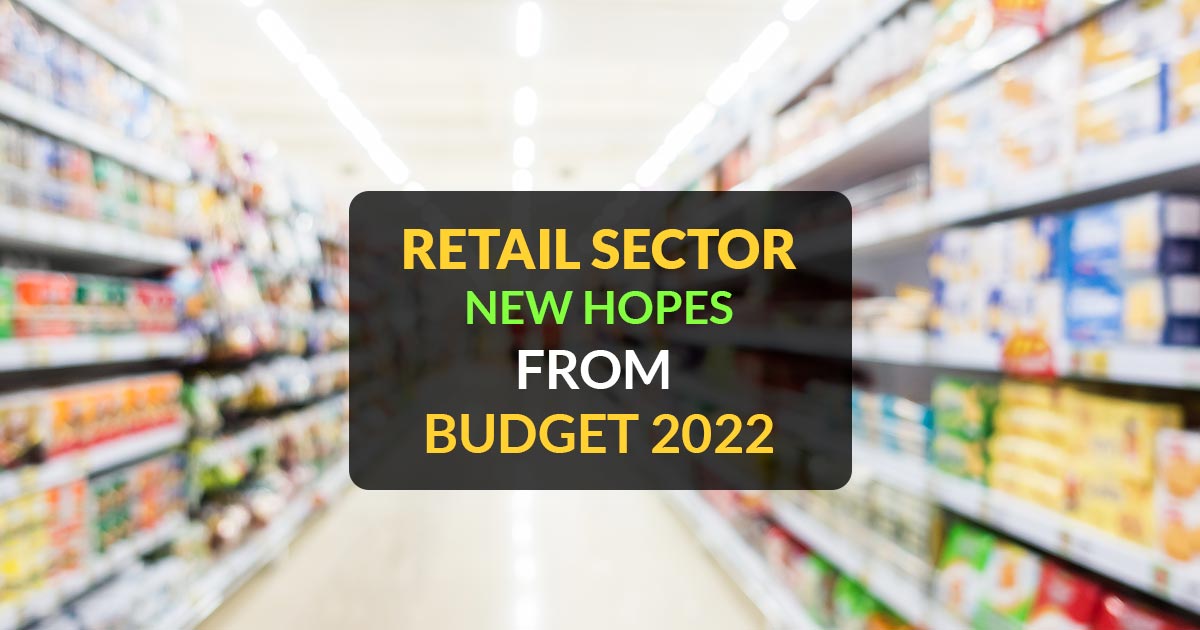
As retail sectors are on the path of recovery but due 2nd half of FY22 rising Omicron cases have backed out the recovery again. The retail sector is eyes on the budget for good hope in the current uncertain territory.
Seeing the rise in the cases and the increasing omicron variant the government must circulate a scheme with all measures and incentives to assists the retail sector. Counter-cyclical fiscal policy for constant business cycles is to be carried on by the government. This policy asks for lower spending along with the surge in taxes.
GST Rates on fuels including petrol & diesel must be capped on a limit in the present situation. In the former 2 years with the rise in the crude rates, the taxes are also surged and generated inflationary pressure in the country along with that the demand of the consumer also gets reduced.
Considering the pandemic for the 3rd consecutive year the government must opt for a growth-oriented budget for the entire economy. The retail sector is recovering slowly due to various restrictions implemented due to the pandemic the sudden coming of Omicron has disrupted the recovery computations. Consumers reduce their investments.
The amendments and hikes in tariffs subsequently interrupted the supply chains, inflating costs and denting demand from consumers. Policy stability and the tax regime remain the need of the hour towards the retailers and the economy which makes the future of the sectors effective.
Driving contactless transactions is effective through focusing on the digital facilities to overcome the effect of the lockdowns. The need to improve and rectify the digital infrastructure through incentives and establishment is important so as to surge the supply chain management and build the experience of online shopping secure, safe, and suitable. Pan India infrastructure development should indeed be increased so as to consider the multiple advantages towards the economy.
Moreover, the National Logistics policy must be disclosed immediately to plug the supply chain voids. Logistics will be one of the support towards making India a $5 trillion economy. Under the 2020 report from Arthur D. Little India and CII, logistics spending in India was pegged at approximately 13% of the GDP (about $400 billion) with respect to the global average of almost 8%. The same makes a yearly competitiveness gap of roughly $180 billion, which can expand to $500 billion by 2030. A National Logistics Policy will manage these supply chain gaps.
Moreover, FDI in multi-brand retail must rise from 51 to 75 per cent relaxed FDI norms would make an effective environment for the industry, and lastly, it gives an advantage to the consumers.
Also, GST rates on various goods like textiles, garments, footwear, etc who are being hiked from 5 to 12 per cent must be diminished to the former levels.
Now is the important time to reduce the GST and make it easier by shifting to a two-slab regime. Via diminishing the compliance load the lower taxes would rectify the liquidity in the economy and makes the stakeholders laid an effective position. Consumers would also get an advantage in the non-metro markets generating effective demand for the retail and the additional trades. An effective economic scheme would assist small businesses to join the e-commerce revolution.
The third wave has negatively influenced the nascent economic recovery these measures would motivate all the industries. While on the other side generating and entrepreneurial opportunities would draw a $5 trillion economy vision.